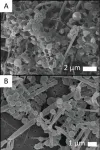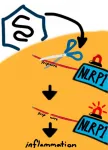(Press-News.org) Cities are not all the same, or at least their evolution isn't, according to new research from the University of Colorado Boulder.
These findings, out this week in Nature Communications Earth and Environment and Earth System Science Data, buck the historical view that most cities in the United States developed in similar ways. Using a century's worth of urban spatial data, the researchers found a long history of urban size (how big a place is) "decoupling" from urban form (the shape and structure of a city), leading to cities not all evolving the same--or even close.
The researchers hope that by providing this look at the past with this unique data set, they'll be able to glimpse the future, including the impact of population growth on cities or how cities might develop in response to environmental factors like sea level rise or wildfire risk.
"We can learn so much more about our cities about and urban development, if we know how to exploit these kinds of new data, and I think this really confirms our approach," said Stefan Leyk, a geography professor at CU Boulder and one of the authors on the papers.
"It's not just the volume of data that you take and throw into a washing machine. It's really the knowing how to make use of the data, how to integrate them, how to get the right and meaningful things out there."
It's projected that by 2050, more than two-thirds of humans will live in urban areas. What those urban areas will look like, however, is unclear, given limited knowledge of the history of urban areas, broadly speaking, prior to the 1970s.
This work and previous research, however, hopes to fill that gap by studying property-level data from the property management company, Zillow, through a property-share agreement.
This massive dataset, called the Zillow Transaction and Assessment Dataset or ZTRAX, contains about 374 million data records that include the built year of existing buildings going back over 100 years. Previously, the researchers then used these data to create the Historical Settlement Data Compilation for the United States (HISDAC-US), a set of unique time series data set that's freely available for anyone to use.
For this new research, which were funded by the National Science Foundation, the Institute of Behavioral Sciences and Earth Lab, the researchers applied statistical methods and data mining algorithms to the data, trying to glean all available information on the nature of settlement development, particularly for metropolitan statistical areas, or high-density geographic regions.
What they found is that not only were they able to learn more about how to measure urban size, shape and structure (or form), including the number of built-up locations and their structures, they were also able to see very clear trends in the evolution of these distinct categories of urban development.
In particular, the researchers found that urban form and urban size do not develop the same as previously thought. While size generally moves in a single direction, especially in large cities, form can ebb and flow depending on constraints, such as the geography of places as well as environmental and technological factors.
"This (the categorization) is something that is really novel about that paper because this could not be done prior to that because these data were just not available," said Johannes Uhl, the lead author of the paper and a research associate at CU Boulder.
It's remarkable, according to the researchers, that the two articles are being published by different high-impact journals on the same day. While the Nature Communications Earth and Environment piece discusses the substantive application of the data, the Earth System Science Data discusses the data themselves, the methods to create them, and the limitations with them.
"There's so much potential in this current data revolution, as we call it," Leyk commented. "The growth of so-called data journals is a good trend because it's becoming more and more systematic to publish formal descriptions of the data, to learn where the data can be found, and to inform the community what kind of publications are based on these data products. So, I like this trend and we try and make use of it."
This research, however, is still far from finished. Next, the researchers hope to further examine the categories, and, in particular, the different groups of cities that emerged in the process of this research to hopefully determine a classification system for urban evolution, while also applying the data approach to more rural settings.
"The findings are interesting, but they can of course be expanded into greater detail," Uhl said.
The researchers are also working with other researchers in different fields across the university to explore the applications of these data on topics as far reaching as urban fuel models for nuclear war scenarios, the exposure of the built environment to wildfire risk, and settlement vulnerability from sea level rise.
"The context is a little different in each of these fields, but really interesting," Leyk said. "You realize how important that kind of new data, new information, can become for so many unexpected topics."
INFORMATION:
The other authors for both papers include Anna Braswell at University of Florida (former Earth Lab researcher) and Dylan Connor at Arizona State University (former Institute of Behavioral Sciences researcher). Additional authors for the Earth System Data Science paper include Caitlin McShane, a geography graduate student, and Deborah Balk, a sociology and economics professor at City University of New York.
Boulder, Colo., USA: For most of Earth's history, life was limited to the microscopic realm, with bacteria occupying nearly every possible niche. Life is generally thought to have evolved in some of the most extreme environments, like hydrothermal vents deep in the ocean or hot springs that still simmer in Yellowstone. Much of what we know about the evolution of life comes from the rock record, which preserves rare fossils of bacteria from billions of years ago. But that record is steeped in controversy, with each new discovery (rightfully) critiqued, questioned, and analyzed from every angle. Even then, uncertainty ...
Scientists are opening new windows into understanding more about the constantly shifting evolutionary arms race between viruses and the hosts they seek to infect. Host organisms and pathogens are in a perennial chess match to exploit each other's weaknesses.
Such research holds tantalizing clues for human health since the immune system is on constant alert to deploy counter measures against new viral attacks. But unleashing too much of a defensive response can lead to self-inflicted tissue damage and disease.
A new study published in the journal eLife by biologists at the University ...
Scientists have created a new way to detect the proteins that make up the pandemic coronavirus, as well as antibodies against it. They designed protein-based biosensors that glow when mixed with components of the virus or specific COVID-19 antibodies. This breakthrough could enable faster and more widespread testing in the near future. The research appears in Nature.
To diagnose coronavirus infection today, most medical laboratories rely on a technique called RT-PCR, which amplifies genetic material from the virus so that it can be seen. This technique requires specialized staff and equipment. It also consumes lab supplies ...
Housing instability and homelessness are widely understood to have an impact on health, and certain housing problems have been linked to specific childhood health conditions, such as mold with asthma. But it has not been clear how overall housing quality may affect children--especially those who are at risk from other social determinants of health such as food insecurity or poverty.
A new nationally representative study in the Journal of Child Health Care, led by researchers at Nationwide Children's Hospital, has found poor-quality housing is independently associated with poorer pediatric health, ...
As states and municipalities begin to roll out mass vaccination campaigns, some people have dared to ask: When will it be safe to resume "normal" activities again? For those in most parts of the United States, the risk of COVID-19 infection remains extremely high.
People now have access to better real-time information about infection rates and transmission at the county or city level, but they still need a framework to help them decide what is safe to do. Social distancing and shutting businesses have reduced the number of cases, but there is mounting pressure to reopen businesses and classrooms.
Life is likely to continue in this limbo for some time. A new model co-authored by ...
A University of Otago study explored factors which influence Americans' levels of concern over climate change, providing discussion on how those factors could impact mitigation efforts.
A key thread of the research examined the ability of people to visualize the future. Results showed that while 74 per cent of respondents were concerned about climate change, only 29 per cent discussed lower carbon options when asked to describe travel in the year 2050.
"This suggests actively envisioning a sustainable future was less prevalent than climate change concern. So while the majority were concerned, ...
UNIVERSITY PARK, Pa. -- People who do not accept inequality are more likely to negatively evaluate companies that have committed wrongdoings than people who do accept inequality, and this response varies by culture, according to researchers at Penn State. The team also found that companies can improve their standing with consumers when they offer sincere apologies and remedies for the harm they caused to victims.
"Some prominent examples of company moral transgressions include Nike's and Apple's questionable labor practices in developing countries, BP's oil spill in the Gulf of Mexico and Volkswagen's emissions scandal," said Felix Xu, graduate student in marketing at Penn State.
In their paper, which published on Jan. 22 in the Journal of Consumer Research, the team ...
Thermoelectric materials, which can generate an electric voltage in the presence of a temperature difference, are currently an area of intense research; thermoelectric energy harvesting technology is among our best shots at greatly reducing the use of fossil fuels and helping prevent a worldwide energy crisis. However, there are various types of thermoelectric mechanisms, some of which are less understood despite recent efforts. A recent study from scientists in Korea aims to fill one such gap in knowledge. Read on to understand how!
One of these mechanisms mentioned earlier is the spin Seebeck effect (SSE), which was discovered in 2008 by a research team led by Professor Eiji Saitoh from Tokyo University, Japan. The SSE is a phenomenon in which ...
DALLAS - Jan. 28, 2021 - Simulation can be a viable way to quickly evaluate and refine new medical guidelines and educate hospital staff in new procedures, a recent study from UT Southwestern's Department of Pediatrics shows. The findings, published recently in the journal Pediatric Quality and Safety and originally shaped around new COVID-19-related pediatric resuscitation procedures at UTSW and Children's Health, could eventually be used to help implement other types of guidelines at medical centers nationwide.
For decades, U.S. hospitals have used the same standard procedures ...
"King Solomon made for himself the carriage; he made it of wood from Lebanon. Its posts he made of silver, its base of gold. Its seat was upholstered with purple, its interior inlaid with love." (Song of Songs 3:9-10)
For the first time, rare evidence has been found of fabric dyed with royal purple dating from the time of King David and King Solomon.
While examining the colored textiles from Timna Valley - an ancient copper production district in southern Israel - in a study that has lasted several years, the researchers were surprised to find remnants of woven fabric, a tassel and fibers of wool dyed with royal purple. Direct radiocarbon ...







